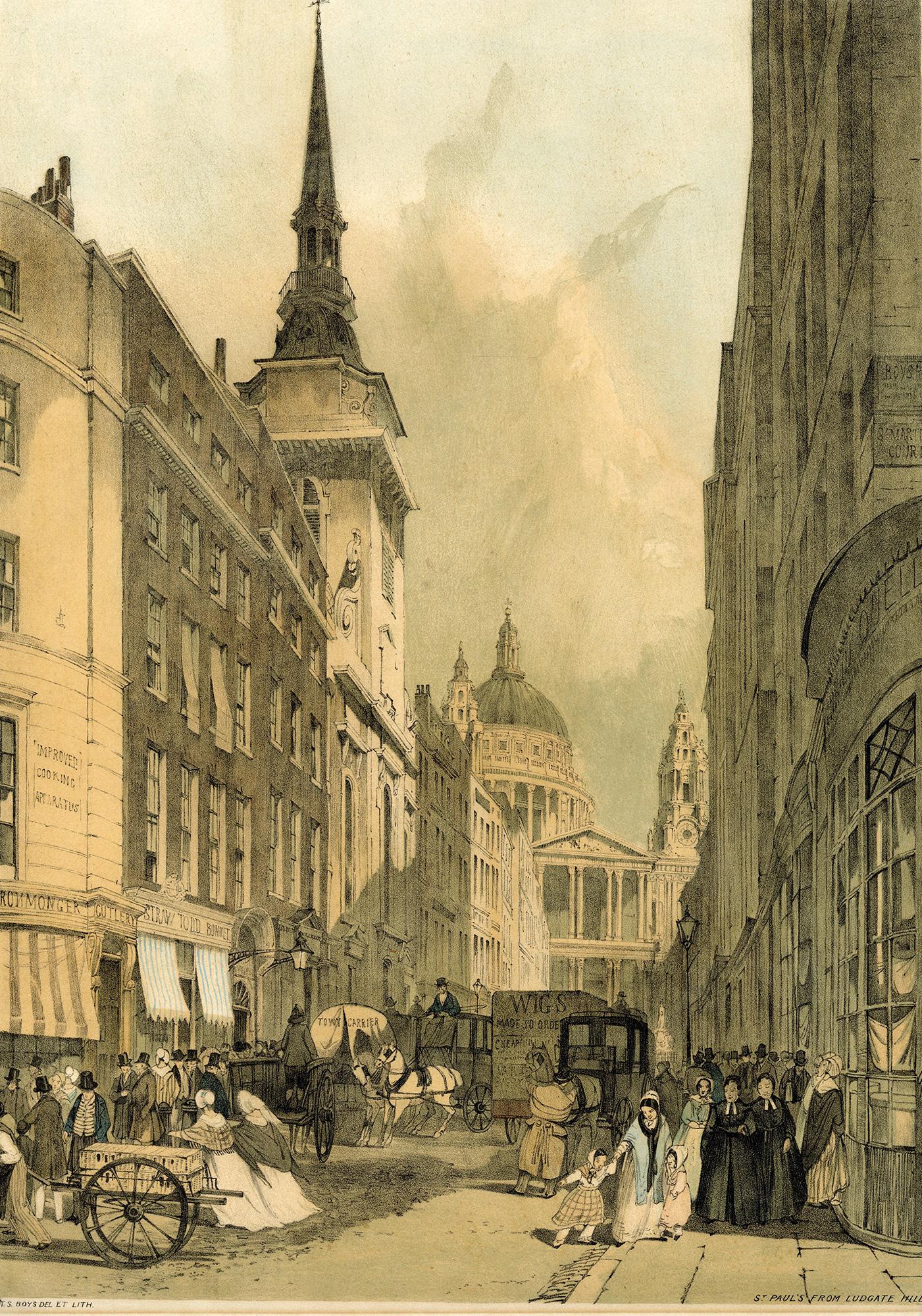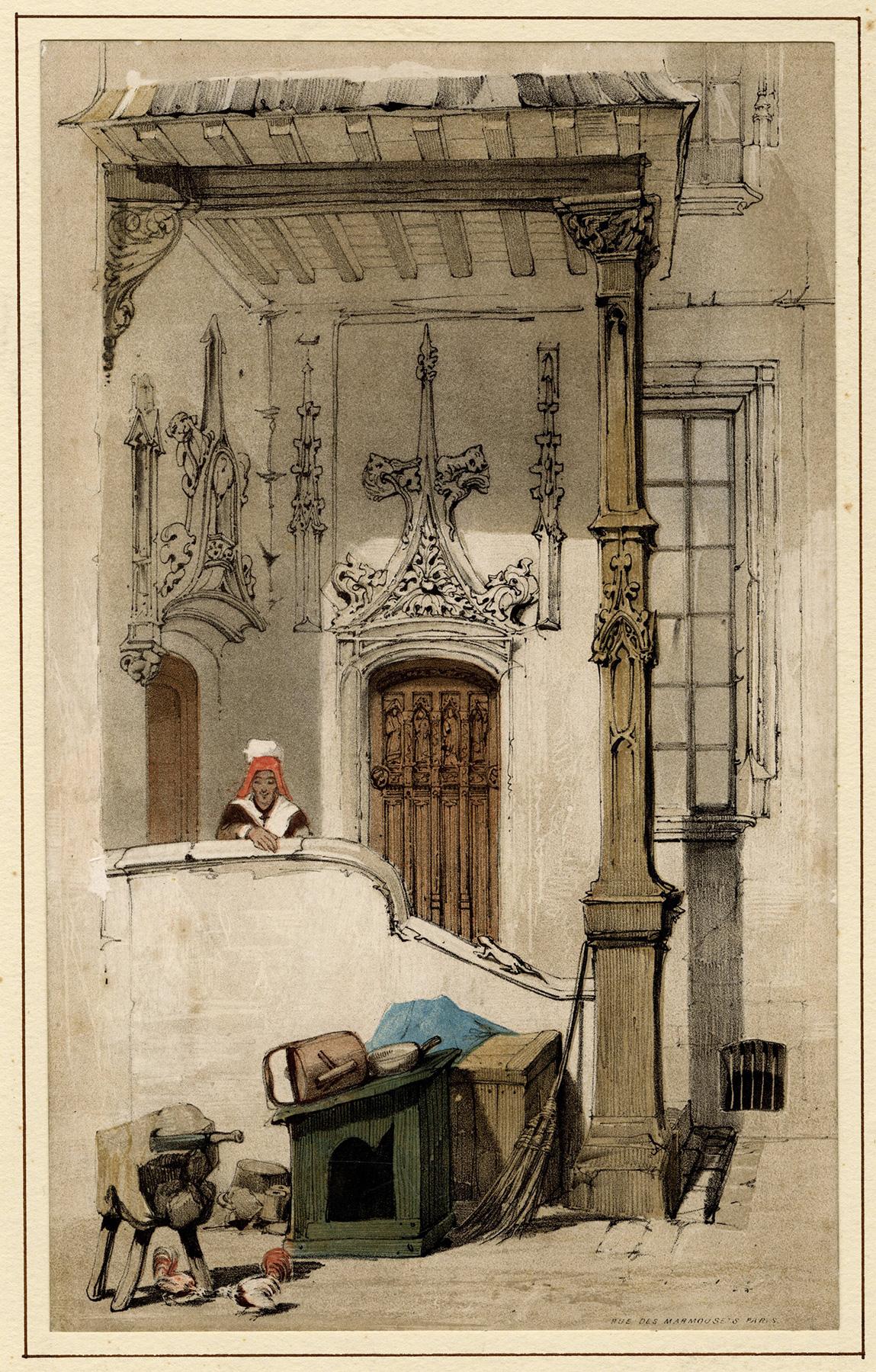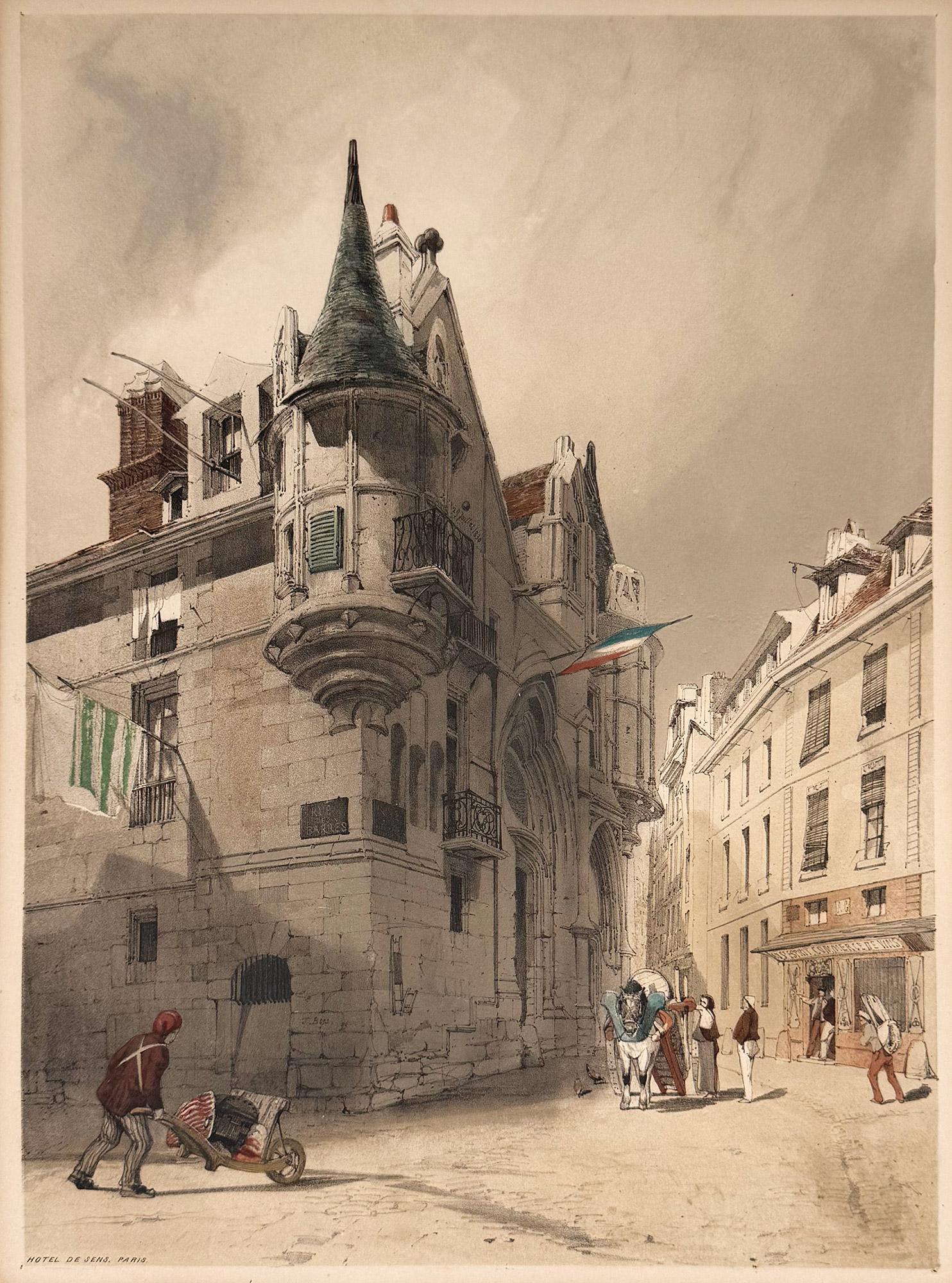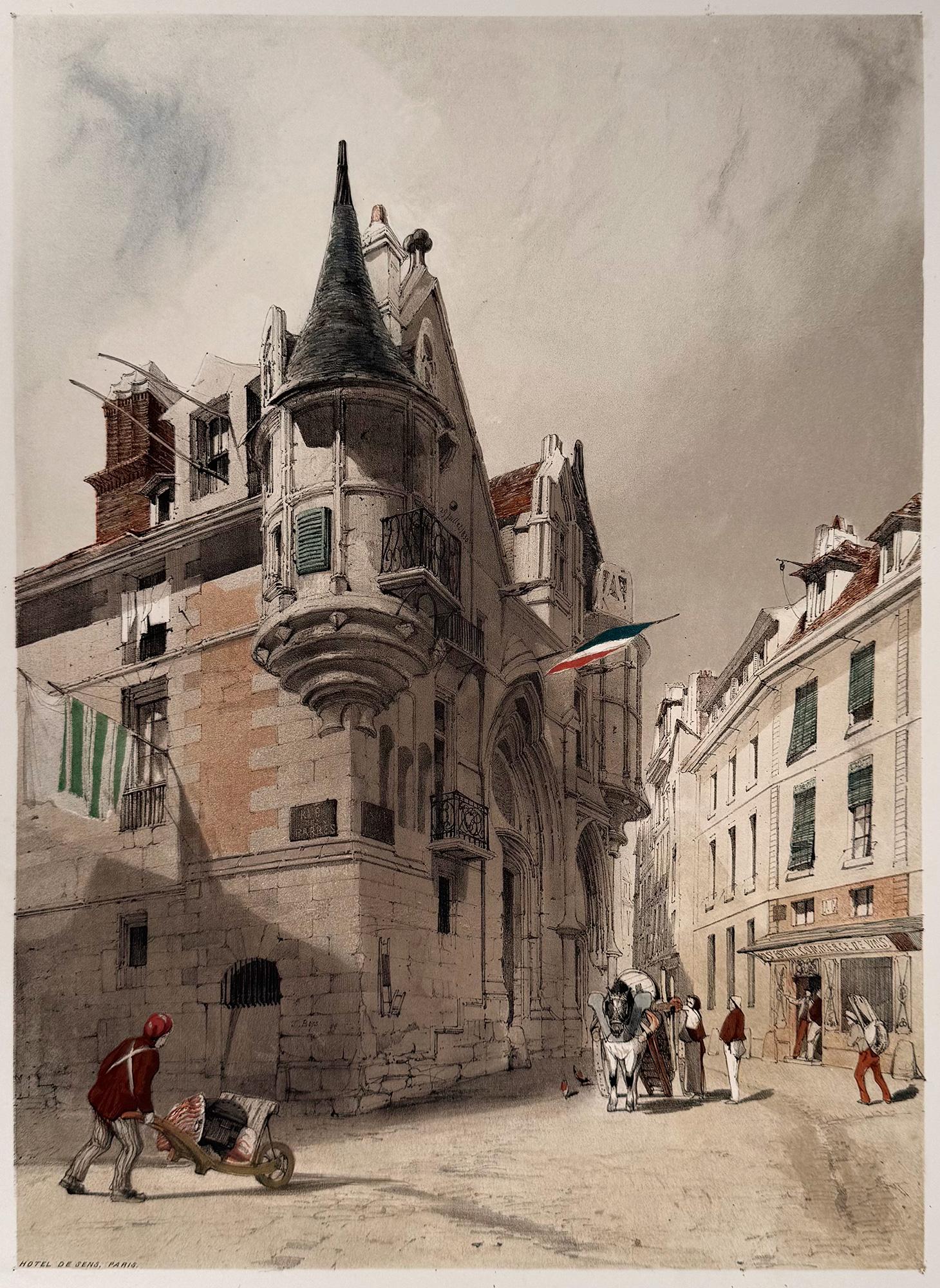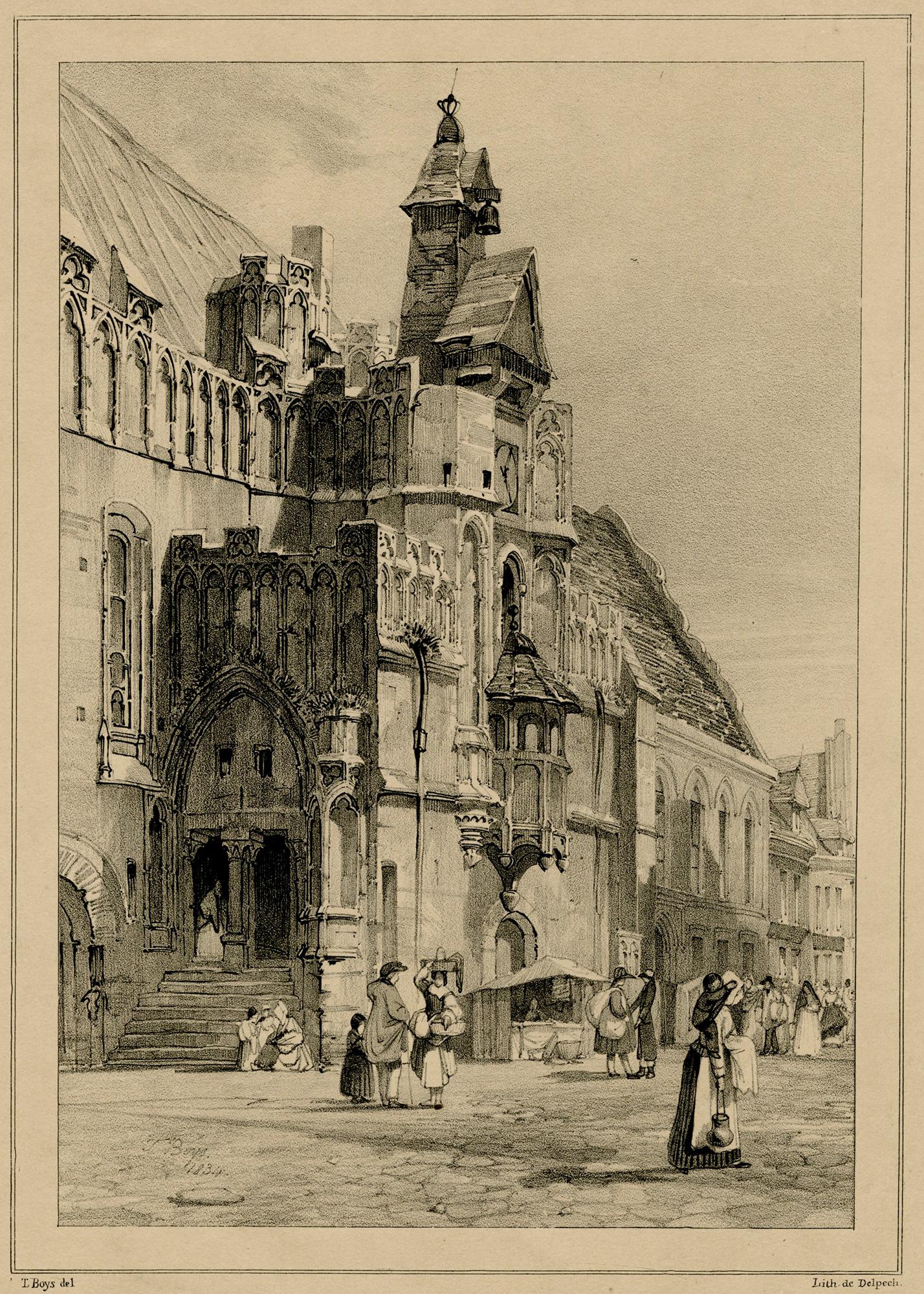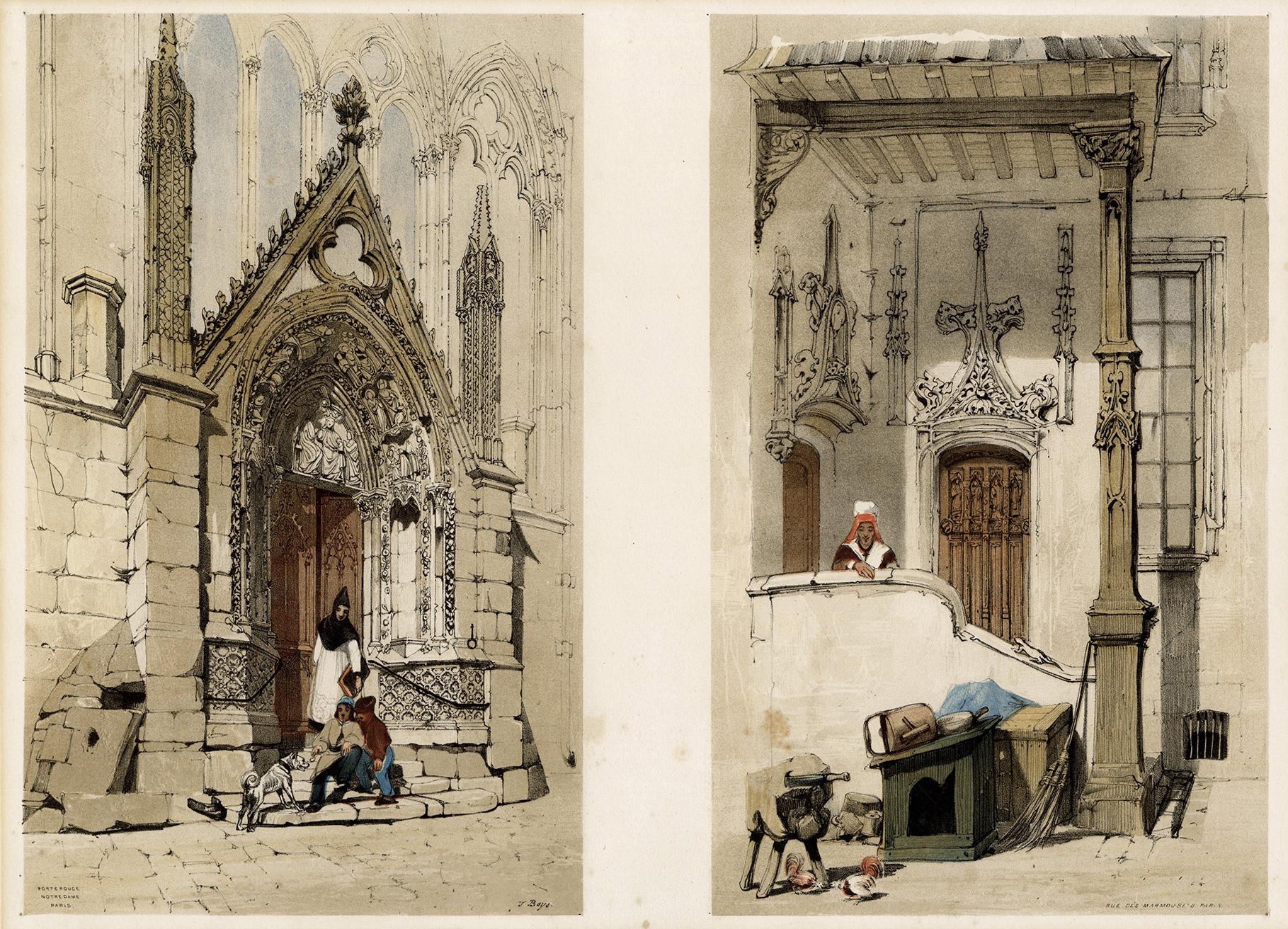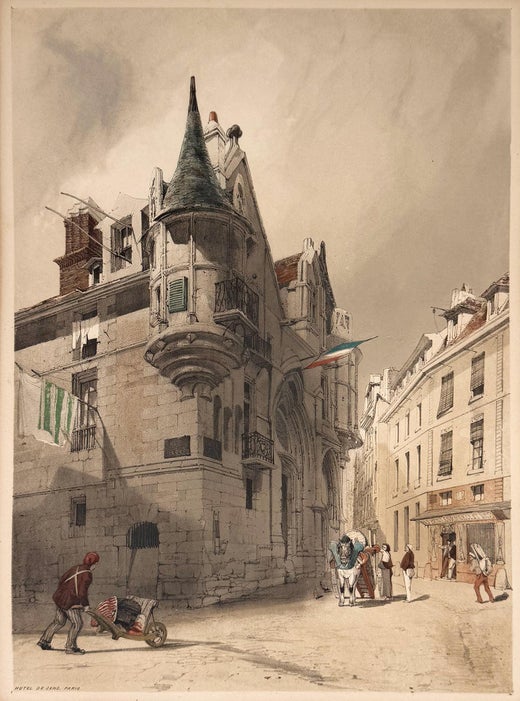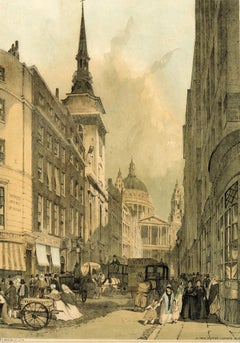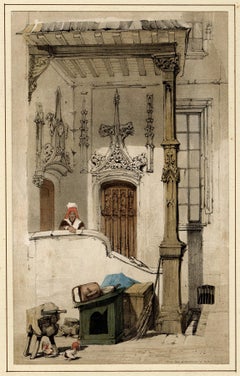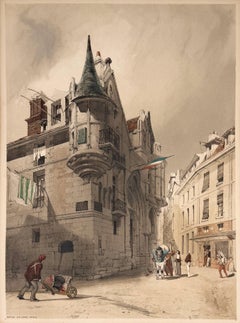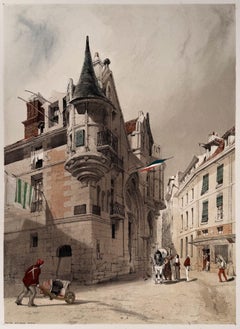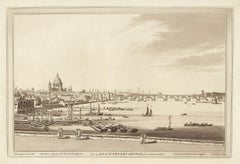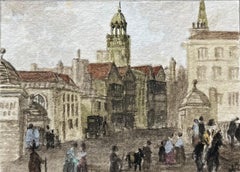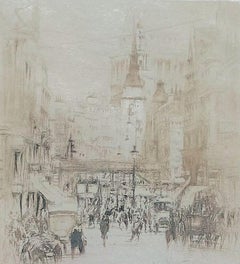Items Similar to The Strand, from Original Views of London As It Is
Want more images or videos?
Request additional images or videos from the seller
1 of 7
Thomas Shotter BoysThe Strand, from Original Views of London As It Is1842
1842
$500
£389.28
€442.73
CA$719.38
A$790.21
CHF 412.97
MX$9,423.88
NOK 5,229.29
SEK 4,871.52
DKK 3,308.27
About the Item
London: Charles Joseph Hullmandel, 1842.
Lithograph with hand coloring in watercolor on cream wove paper, 17 5/16 x 12 3/16 inches (440 x 309 mm), full margins. Scattered foxing throughout. Some paper tape remnants on the right and left sheet edges, outside of the image area, as well as two small tabs of non-archival tape at the top sheet edge, verso, from a former mount.
An impression of this work may be viewed in the permanent collection of the Metropolitan Museum of Art, accession number: 19.71.2(21).
- Creator:Thomas Shotter Boys (1803 - 1874, English)
- Creation Year:1842
- Dimensions:Height: 17.33 in (44 cm)Width: 12.17 in (30.9 cm)
- Medium:
- Movement & Style:
- Period:
- Condition:
- Gallery Location:Middletown, NY
- Reference Number:Seller: BH12211stDibs: LU1979214727962
Thomas Shotter Boys
Boys was born at Pentonville, London, on 2 January 1803. He was articled to the engraver George Cooke. When his apprenticeship came to an end he went to Paris where he met and came under the influence of Richard Parkes Bonington, who persuaded him to abandon engraving for painting. Some sources describe him as a pupil of Bonington, although William Callow, who later shared a studio with him in Paris, disputed this. He exhibited at the Royal Academy for the first time in 1824, and in Paris in 1827. In 1830 he went to Brussels, but returned to England on the outbreak of the revolution there. Paying another visit to Paris, he remained there until 1837, and then returned to England in order to lithograph the works of David Roberts and Clarkson Stanfield. His most important work, Picturesque Architecture in Paris, Ghent, Antwerp, Rouen, etc., a collection of color lithographs, appeared in 1839, attracting a great deal of admiration. Drawn on the stone by Boys and printed by Charles Joseph Hullmandel, it was described in a review in the Polytechnic Journal as "the first successful effort in chroma-lithography [sic] hitherto brought to perfection". King Louis-Philippe sent the artist a ring in recognition of its merits. He also published Original Views of London as it is, drawn and lithographed by himself, (London, 1843). He drew the illustrations to Blackie's History of England, and etched some plates for John Ruskin's Stones of Venice. Boys was a member of the Institute of Painters in Water Colours, and of several foreign artistic societies. He died in 1874. [source: Wikipedia]
About the Seller
5.0
Vetted Professional Seller
Every seller passes strict standards for authenticity and reliability
Established in 2004
1stDibs seller since 2022
76 sales on 1stDibs
Typical response time: 1 to 2 days
- ShippingRetrieving quote...Shipping from: Middletown, NY
- Return Policy
More From This Seller
View AllSt. Paul's From Ludgate Hill, from Original Views of London As It Is
By Thomas Shotter Boys
Located in Middletown, NY
Lithograph with hand tinting on heavy wove paper, full margins. Significant condition issues in the margins which include adhesive residue, edge tears and minor edge losses. The image area is clean with minor mat tone, however, colors are slightly attenuated. The verso shows moderate uneven toning. Issues primarily exist outside of the image area. This large and lively work was printed by Charles Hullmandel.
_______
The images in Boys's 1842 portfolio, Original Views of London...
Category
Mid-19th Century English School Landscape Prints
Materials
Watercolor, Handmade Paper, Lithograph
Rue de Marmousets, Paris; From Picturesque Architecture in Paris, Ghent, ....
By Thomas Shotter Boys
Located in Middletown, NY
Aquatint with hand coloring in oil color on smooth wove paper, 10 5/8 x 7 3/8 inches (270 x 187 mm), full margins. Laid down to a support, as issued. Moderate toning and surface soil...
Category
1830s English School Figurative Prints
Materials
Oil, Handmade Paper, Aquatint
Hôtel De Sens, Paris
By Thomas Shotter Boys
Located in Middletown, NY
London: Charles Hullmandel, c1839.
Stipple point lithograph with hand coloring in watercolor on cream wove paper, 21 1/4 x 14 1/4 inches (540 x 362 mm), the full sheet. In fair cond...
Category
Late 19th Century English School Landscape Prints
Materials
Watercolor, Engraving
Hotel de Sens, Paris
By Thomas Shotter Boys
Located in Middletown, NY
Lithograph in colors on cream wove paper 16 3/4 x 12 inches (425 x 304 mm); sheet 21 1/2 x 14 1/4 (546 x 361 mm), full margins. In good condition with minor toning.
Category
Mid-19th Century English School Landscape Prints
Materials
Handmade Paper, Lithograph
Hôtel de Ville à St. Omer
By Thomas Shotter Boys
Located in Middletown, NY
Paris, Delpech.
Lithograph with engraving on cream wove paper, 11 7/8 x 8 inches (299 x 203 mm), unevenly trimmed but full margins, the full sheet. In good condition with two paper ...
Category
Mid-19th Century English School Landscape Prints
Materials
Handmade Paper, Lithograph, Engraving
PARIS: Porte Rouge Notre Dame & Rue des Marmousets
By Thomas Shotter Boys
Located in Middletown, NY
Lithograph in colors with engraving on buff wove paper. Each of the two images measures 10 3/4 x 6 5/8 inches (271 x 167 mm), with the sheet measuring 14 1/4 x 20 1/2 inches (360 x 5...
Category
Mid-19th Century English School Landscape Prints
Materials
Handmade Paper, Lithograph
You May Also Like
A View of London as it was in the Year 1647 pub. by Boydell 1756
Located in Paonia, CO
A View of London as it was in the Year 1647 is a hand colored copper engraving published by the well known British publisher and engraver John Boydell (1720-1804) and engraved by R.Benning sold at Cheapside London 1756. Panoramic view on two sheets conjoined as issued linen mounted. Lettered with title in French and English along the base of the image including a numbered key to the structures. In very good condition except for one 1/8 inch tear in the sky to the left of the middle seam that is barely noticeable. This is a large very detailed panorama of London...
Category
1750s Other Art Style Landscape Prints
Materials
Etching
View of Blackfriars Bridge from Somerset Place, C18th English aquatint
Located in Melbourne, Victoria
View of Blackfriars Bridge from Somerset Place'
Aquatint by JC Stadler after J Farmington.
Published c1795 for Boydell's 'History of the River Thames'. Joseph Constantine Stadler (...
Category
Late 18th Century Naturalistic Landscape Prints
Materials
Engraving
Historic Miniature Watercolor of Bristol Bridge Looking Towards the High Street
Located in Cirencester, Gloucestershire
Title: Historic Miniature Watercolor of Bristol Bridge Looking Towards the High Street
by Jack Grunwell, 20th century British artist
Medium: Watercolor on thin card, unframed
Measur...
Category
20th Century English School Landscape Drawings and Watercolors
Materials
Watercolor
Ludgate Hill
By William Walcot R. E. Hon. R. I. B. A.
Located in Storrs, CT
Ludgate Hill. 1921. Etching, aquatint, and drypoint. Dickins 69. 5 5/8 x 5 1/8 (sheet 13 5/8 x 9 3/4). A fine proof with plate tone, printed on 'J Wha[tman] cream wove paper. Edition of 275 for the UK and 125 for the US. Signed in pencil.
Ludgate Hill is a street that runs west from St. Paul's Churchyard to Ludgate Circus (built in 1864), and from there becomes Fleet Street. The Ludgate Hill railway station, between Water Lane and New Bridge Street, is a station of the London, Chatham, and Dover Railway. It was closed before World War II and the railway bridge and viaduct between Holborn Viaduct and Blackfriars stations was demolished in 1990 to enable the construction of the City Thameslink railway station in a tunnel. This also involved the regrading of the slope of Ludgate Hill at the junction. About halfway up Ludgate Hill is St Martin, Ludgate church. This was physically joined to the Ludgate.
When he was seventeen, William Walcot began to study architecture under Louis Benois at the Imperial Academy of Art in Saint Petersburg. He went to Paris where he continued his studies at the Ecole des Beaux-Arts and the Atelier Redon. He practiced as an architect briefly in Moscow, designing the Hotel...
Category
Early 20th Century Modern Landscape Prints
Materials
Drypoint, Etching, Aquatint
$400 Sale Price
20% Off
Oxford High Street with Queen's College and University College engraving
Located in London, GB
To see our other views of Oxford and Cambridge, scroll down to "More from this Seller" and below it click on "See all from this Seller" - or send us a message if you cannot find the ...
Category
1790s Prints and Multiples
Materials
Engraving
London - Etching by W. H.Bartlett - 1845
Located in Roma, IT
London is an etching realized in 1845 by W. H.Bartlett.
Signed on the plate.
Titled on the lower center.
Good conditions with slight foxing.
The artwork is beautifully realized ...
Category
1840s Modern Figurative Prints
Materials
Etching
$141 Sale Price
40% Off
More Ways To Browse
Currier Ives New York
Dali Espana
Dali Normandy
Damien Hirst Politeness
David Hockney Tree
David Roberts Edfou
David Roberts Nazareth
David Roberts Sphinx
Dawn Nancy
Elizabeth Sutton
Engraving Rossini
Etam Cru
Frank Licsko On Sale
Fred Money
Geno Pettit
Gerard Trignac
Harold Altman Horse
Helen Frankenthaler Mary Mary
